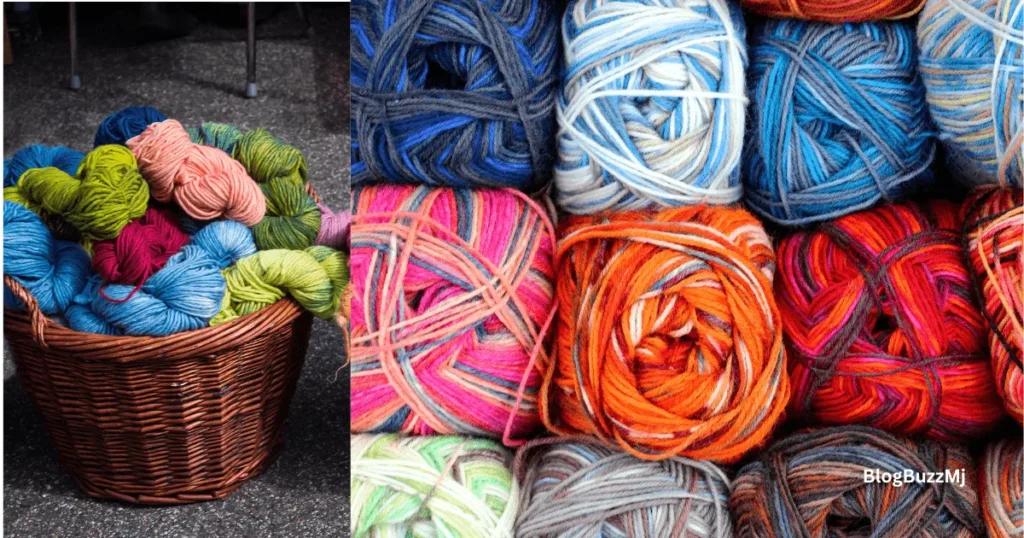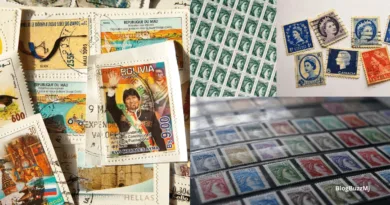Is Knitting a Good Hobby for Relieving Stress? 7 Reasons Why You Should Try It Now!
Introduction
In today’s fast-paced world, stress has become an integral part of our lives. Are you looking for a new hobby that can help you relax and relieve stress? “Is Knitting a Good Hobby for Relieving Stress? Absolutely, Knitting is not only a productive and creative activity, but it also has a calming effect on the mind and body. In this blog, we will explore why knitting is a good hobby for relieving stress and provide seven compelling reasons why you should try it now.
Before delving into the seven reasons, let’s gain some understanding of the Knitting basics.
What is Knitting?
Knitting is a method of creating fabric by interlocking yarns through a series of loops using two knitting needles or a knitting machine. It is a versatile craft that can range from simple and practical to intricate and artistic and has been practiced for centuries around the world. Knitting has gained renewed popularity in recent years, thanks in part to its numerous mental and physical health benefits.

Knitting Patterns
Knitting patterns are the instructions that guide you through creating a particular knitting project. They typically include a list of materials needed, the specific stitches and techniques required, and any measurements or special considerations to keep in mind. Knitting patterns can range from beginner level to advanced, and can be found online, in books, or as part of a kit.
Using knitting patterns can be a great way to challenge yourself and improve your knitting skills, as well as create a wide variety of items. There are many free and paid knitting patterns available online, and you can often find patterns for specific projects like hats, scarves, and sweaters.
It’s important to choose a pattern that matches your skill level and interests, as well as consider the yarn and needles required. Once you have your pattern, take your time and follow the instructions carefully to create a beautiful product.
Types of Knitting Patterns
When you’re starting out with knitting, it can be overwhelming to look at all the different types of patterns available. Here are some of the most common types of knitting patterns:
Stockinette stitch pattern
This is the most basic and commonly used pattern, where you knit one row and purl the next. It creates a smooth “V” shape on one side and a bumpy texture on the other.
Garter stitch pattern
This is also a very basic pattern, where you knit every row. It creates a squishy, textured fabric that is often used for scarves, blankets, and other cozy items.
Ribbing pattern
This is a pattern that alternates between knit and purl stitches in a specific order, such as knit 1, purl 1. It creates a stretchy, elastic fabric that is often used for cuffs, collars, and other areas that need to fit snugly.
Lace pattern
This is a pattern that incorporates decorative holes or “eyelets” into the fabric. It can range from simple to intricate, and is often used for shawls, scarves, and other lightweight accessories.
Cable pattern
This is a pattern that creates a twisted, rope-like effect by crossing stitches over each other. It can range from simple to complex, and is often used for sweaters, hats, and other items that need a bit of texture.
Fair Isle pattern
This is a pattern that uses two or more colors to create a colorful, geometric design. It is often used for hats, mittens, and other accessories.
Intarsia pattern
This is a pattern that uses different colors of yarn to create large, blocky designs. It is often used for blankets, sweaters, and other larger projects.
These are just a few examples of the many types of knitting patterns available. Once you’ve mastered the basics, you can start exploring more complex patterns and designs to create truly unique and beautiful projects.
Tips for Beginners in Knitting
Knitting is an enjoyable hobby that can provide relaxation and a sense of accomplishment. However, starting out can be overwhelming, especially for beginners who have never tried knitting before. Here are some tips to help you get started on your knitting journey:
Start with simple projects
It’s best to begin with simple projects that use basic stitches and techniques. This will help you develop your skills and confidence before moving on to more complex patterns.
Choose the right tools
Make sure you have the right tools for the job. You will need knitting needles, yarn, and a pair of scissors. You may also want to invest in a stitch counter and stitch markers.
Use high-quality yarn
High quality yarn will make a big difference in the outcome of your knitting projects. Choose yarn that is soft and easy to work with, and that is appropriate for your chosen project.
Practice your tension
Tension is important in knitting, as it affects the look and feel of your finished project. Practice maintaining even tension as you work.
Learn to read patterns
Knitting patterns can be intimidating at first, but with practice, you will learn to read them with ease. Start with simple patterns and work your way up to more complex designs.
Join a knitting group
Knitting is a social activity and joining a knitting group can help you learn new techniques and make friends who share your interest.
By following these tips, beginners can get started on their knitting journey with confidence and ease. Remember, practice makes perfect, so don’t be discouraged if you make mistakes along the way. With patience and perseverance, you can create beautifully knitted items to enjoy for years to come.
Knitting Equipment
If you’re interested in trying out knitting as a hobby, you’ll need some basic equipment. Fortunately, knitting doesn’t require much in the way of tools, and most of them are affordable.
Knitting Needles
Knitting needles are the most essential tool for knitting. They come in different materials, including bamboo, aluminum, and plastic. The size of the needles you need will depend on the thickness of the yarn you choose.
Yarn
Yarn is the material that you’ll be knitting with. There are different types of yarn available, such as wool, cotton, acrylic, and silk, and each type has its own unique qualities.
Stitch Markers
These small plastic rings are placed on the needles to mark your progress as you work through a pattern.
Tapestry Needle
This is a blunt-tipped needle that is used for weaving in ends and seaming pieces together.
Scissors
You’ll need a good pair of scissors for cutting the yarn.
Measuring Tape
A measuring tape is essential for checking the size of your work as you go along.
Row Counter
This tool helps you keep track of the number of rows you’ve knitted, which is especially helpful when working on larger projects.
Investing in quality equipment can make your knitting experience more enjoyable and can also help you produce better results. Whether you’re looking for premium needles and yarn or just the basics to get started, online shopping for knitting supplies is the way to go. Amazon and Flipkart offer competitive prices and a vast selection, so you’re sure to find exactly what you need.
Now that you have an idea of the equipment you’ll need, let’s move on to some beginner-friendly knitting projects that you can try out.
Knitting Projects
Once you have learned the basics of knitting, you might want to start exploring different knitting projects to work on. Knitting projects can vary in complexity and size, so it’s important to choose a project that aligns with your skill level and time availability. Here are some popular knitting projects that you can consider:
Scarves
Scarves are a great starting project for beginners as they require basic knitting stitches and can be completed relatively quickly.
Hats
Knitted hats are a bit more challenging than scarves, but still manageable for beginners. They often involve more advanced techniques like decreasing and shaping.
Sweaters
Sweaters are a bigger and more complex project, but once you have gained enough experience, it can be a rewarding and fulfilling project.
Socks
Knitted socks are another challenging project that require more advanced techniques like knitting in the round and shaping the heel and toe.
When choosing a project, make sure to read the pattern carefully and have all the necessary supplies ready before starting. Don’t be discouraged if it takes some time to complete a project, knitting is a process that requires patience and practice.
Now that we have established the fundamentals, let’s explore the reasons
7 Reasons to Try Knitting
Reason 1: Knitting can reduce stress levels
Studies have shown that knitting can have a calming effect on the mind and body. The repetitive motions of knitting, combined with the focus required to keep track of stitches and patterns, can help to reduce stress levels and promote relaxation.
One study conducted by the British Journal of Occupational Therapy found that knitting can lower heart rate and blood pressure, both of which are indicators of stress. In another study, published in the Journal of the American Medical Association, researchers found that knitting was associated with a decrease in stress and anxiety.
Reason 2: Knitting is a mindful activity
Mindfulness is the practice of being fully present and engaged in the current moment. Knitting is a great way to practice mindfulness, as it requires focus and concentration on the task at hand.
By focusing on the act of knitting, you are able to tune out distractions and calm your mind. This can help to reduce stress and anxiety, and promote a sense of calm and well-being.
Reason 3: Knitting is a form of self-care
Self-care refers to any activity that you do to take care of your physical, emotional, or mental health. Knitting can be a form of self-care, as it provides a way to relax and unwind after a long day.
When you take the time to knit, you are giving yourself a break from the stressors of daily life. You are allowing yourself to engage in an activity that brings you joy and helps you to feel calm and centered.
Reason 4: Knitting can improve cognitive function
Knitting requires a certain level of attention, focus, and concentration. It is a complex activity that involves multiple steps and requires a lot of planning, attention to detail, and problem-solving skills. As a result, knitting can improve cognitive function by challenging the brain and improving its ability to focus and retain information.
Research has shown that knitting can improve memory, increase attention span, and enhance problem-solving skills. A study published in the Journal of Neuropsychiatry and Clinical Neurosciences found that knitting can improve cognitive function in older adults, helping to reduce the risk of cognitive decline and dementia.
Reason 5: Knitting can be a social activity
Knitting can also be a great way to socialize and connect with others. Joining a knitting group or club can provide a sense of community and belonging, as well as an opportunity to learn new skills, share ideas and experiences, and make new friends. Knitting with others can also help to reduce feelings of loneliness and isolation, which can contribute to stress and anxiety.
Reason 6: Knitting can be a form of therapy
Many people find knitting to be a therapeutic activity that helps them to relax, reduce anxiety, and cope with stress. The repetitive, rhythmic motion of knitting can have a calming effect on the mind and body, similar to meditation. Knitting can also be a form of self-expression, allowing individuals to express their creativity and emotions through their work.
Knitting has been used as a form of therapy in various settings, including hospitals, rehabilitation centers, and mental health clinics. The American Heart Association has recognized knitting as a therapeutic activity that can help to reduce stress and lower blood pressure.
Reason 7: Knitting is a creative outlet
Knitting is a creative outlet that allows you to express yourself through color, texture, and pattern. You can create a wide range of items, from scarves and hats to sweaters and blankets. By choosing the type of yarn, pattern, and color, you can personalize your creations to reflect your individual style and taste.
Knitting can also be a way to challenge yourself and learn new skills. There are endless patterns and techniques to explore, from cables and lace to colorwork and intarsia. By pushing yourself to learn new things, you can develop a sense of accomplishment and pride in your creations.
Let us now explore whether knitting is a costly or challenging hobby.
Is knitting an expensive hobby?
When it comes to hobbies, some can be quite expensive to start and maintain. However, knitting is generally considered to be an affordable hobby that can fit into any budget.
The cost of knitting depends on various factors, such as the type of yarn, needles, and patterns you choose. You can start with a basic set of needles and a ball of yarn, which can cost less than $10, or you can invest in higher-end materials that can cost hundreds of dollars.
While high-end materials may be tempting, it’s important to remember that they’re not necessary to enjoy knitting. In fact, many beginner-friendly patterns and projects can be completed using affordable materials.
Moreover, knitting can save you money in the long run. By creating your own scarves, hats, and other accessories, you can avoid purchasing expensive items from stores. Additionally, knitting can provide a sense of accomplishment and pride in creating something with your own hands.
Is Knitting a Hard Hobby?
Knitting can seem like a daunting task, especially for beginners. However, with the right mindset and guidance, it can be a relaxing and enjoyable hobby. The difficulty of knitting depends on the complexity of the project you choose to undertake.
For a beginner, starting with basic knitting stitches and simple patterns is recommended. This will allow you to build your skills and confidence before moving on to more challenging projects. There are also many online tutorials and instructional videos available to help you learn at your own pace.
It is important to note that knitting is not a one-size-fits-all hobby. Some people may find it more challenging than others, and that’s okay. It’s important to find the right level of difficulty that suits you and your personal preferences.
Knitting can also be a great way to challenge yourself and improve your skills over time. As you become more experienced, you can take on more advanced projects and explore different techniques to expand your knowledge and abilities.
In conclusion, while knitting can have a learning curve, it is not necessarily a hard hobby. With patience, practice, and the right resources, anyone can learn to knit and enjoy the many benefits it has to offer.
In the end, let’s explore how knitting is different from crochet
Knitting vs Crochet
Knitting and Crochet are two popular needlework crafts that are often confused with each other. While both involve creating fabric from yarn, they differ in several ways.
Knitting involves creating fabric by interlocking loops of yarn using two or more knitting needles. The fabric created by knitting is typically denser and more elastic than crochet fabric. Knitting is often used for creating clothing items like sweaters, socks, and hats.
Crochet, on the other hand, involves creating fabric by interlocking loops of yarn using a single crochet hook. The fabric created by crochet is typically thicker and has a more textured appearance than knitting fabric. Crochet is often used for creating items like blankets, scarves, and shawls.
One of the main differences between knitting and crochet is the type of stitches used. Knitting stitches are generally easier to learn and follow, while crochet stitches are more complex and require more skill to master.
Another difference is the tools used for each craft. Knitting requires two or more needles, while crochet requires only one hook.
When it comes to cost, knitting and crochet can be relatively inexpensive hobbies. While there are high-end yarns and tools available, there are also many affordable options.
Ultimately, whether someone chooses to knit or crochet comes down to personal preference. Some people find knitting more relaxing, while others prefer the texture and appearance of crochet. Both crafts offer many benefits, including stress relief, improved cognitive function, and the satisfaction of creating something beautiful with one’s own hands.
Conclusion
In conclusion, Is Knitting a Good Hobby? Yes! Knitting is not just a hobby, it is also an excellent way to relieve stress and improve your overall well-being. As we have discussed, there are seven reasons why you should give knitting a try, including its ability to reduce stress levels, improve cognitive function, provide a social outlet, and be a form of therapy. Additionally, knitting offers a creative outlet for those looking to express themselves through crafting. So, whether you are looking for a new hobby or a way to manage stress, consider picking up a pair of knitting needles and trying it out for yourself. You might just be surprised at how much you enjoy it!



